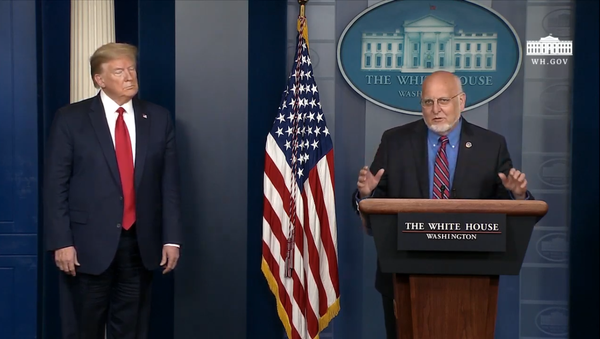On Friday, the CDC posted a guideline stating that COVID-19 can transmit over a distance greater than 6 feet via airborne transmission. In previous guidance, the CDC has stated that the virus mostly spreads through large droplets at a close range.
"There is growing evidence that droplets and airborne particles can remain suspended in the air and be breathed in by others, and travel distances beyond 6 feet (for example, during choir practice, in restaurants, or in fitness classes). In general, indoor environments without good ventilation increase this risk,” the agency said in guidance transcribed by CNN on Sunday, which has since been removed from the CDC’s website. The deleted guidance also stated that people should “use air purifiers to help reduce airborne germs in indoor spaces.”
The CDC on Monday deleted language from its website which stated it is “possible” for the virus to spread via airborne transmission, despite the fact that many health experts have stated that the virus can be spread in that manner.
“A draft version of proposed changes to these recommendations was posted in error to the agency’s official website. CDC is currently updating its recommendations regarding airborne transmission of SARS-CoV-2 (the virus that causes COVID-19). Once this process has been completed, the update language will be posted,” the CDC wrote on its web page.
Jay Butler, the CDC’s deputy director for infectious disease, said the Friday update was posted erroneously.
“Unfortunately an early draft of a revision went up without any technical review,” he said, the Washington Post reported.
Currently, the CDC guidance states that the virus is thought to spread “between people who are in close contact with one another (within about 6 feet)” and “through respiratory droplets produced when an infected person coughs, sneezes or talks.”
For months, however, public health experts have repeatedly stated that the novel coronavirus can also be transmitted through tiny droplets known as aerosols and have urged health agencies to acknowledge this mode of transmission.
In July, 239 scientists wrote a letter urging the World Health Organization and other public health bodies to be more transparent about the possibility that people can catch the virus from droplets floating in the air.
"The current guidance from numerous international and national bodies focuses on hand washing, maintaining social distancing, and droplet precautions," the scientists wrote in the letter, published in the journal Clinical Infectious Diseases.
The latest news comes after the CDC on August 24 published guidance stating that it wasn’t necessary to test people without COVID-19 symptoms for the disease, even if they had been exposed to the virus. However, it appears as though the CDC had also reversed this guideline by September 18.
The updated guidance reads: “Due to the significance of asymptomatic and pre-symptomatic transmission, this guidance further reinforces the need to test asymptomatic persons, including close contacts of a person with documented SARS-CoV-2 infection.”
Last week, the New York Times published a blockbuster article after speaking with unnamed Trump administration officials who claimed that the CDC had written the guidance about not testing asymptomatic people without input from the agency’s director, Robert Redfield.
In an interview last Thursday with the Times, Adm. Brett Giroir, the administration’s testing coordinator and an assistant secretary at the US Department of Health and Human Services (HHS), said that the CDC wrote the original testing guidance referenced above, but that he “coordinated editing and input from the scientific and medical members” of the White House Coronavirus Task Force.
Giroir also said that the draft of the guidance was revised around 20 times over the course of a month, with comments from Redfield and Director of the National Institute of Allergy and Infectious Diseases Anthony Fauci, among other health officials.
Current and former senior health officials also told the Times that political appointees at the HHS have asked the CDC to revise and delay weekly COVID-19 reports that do not reflect positively on the Trump administration.

